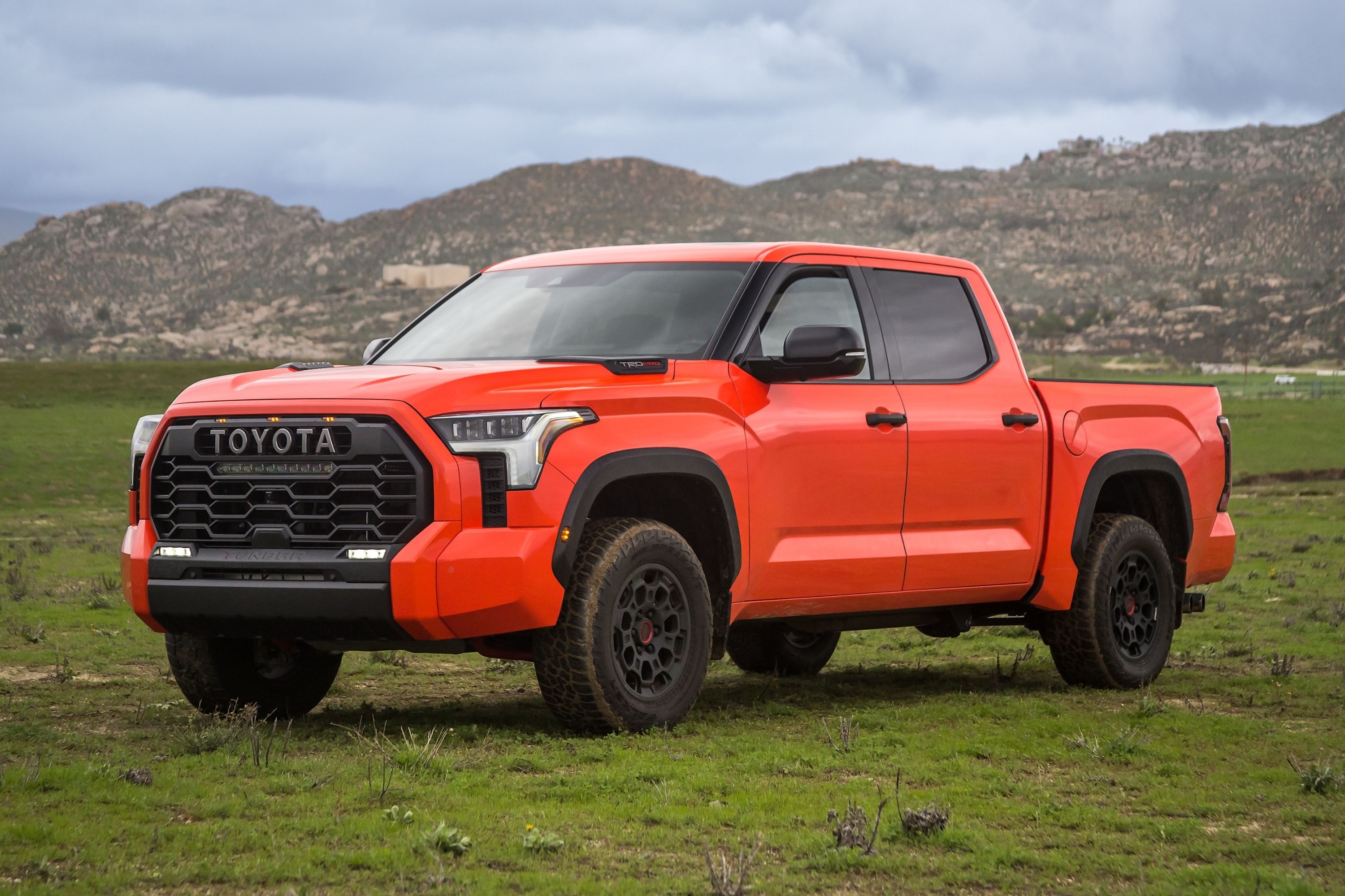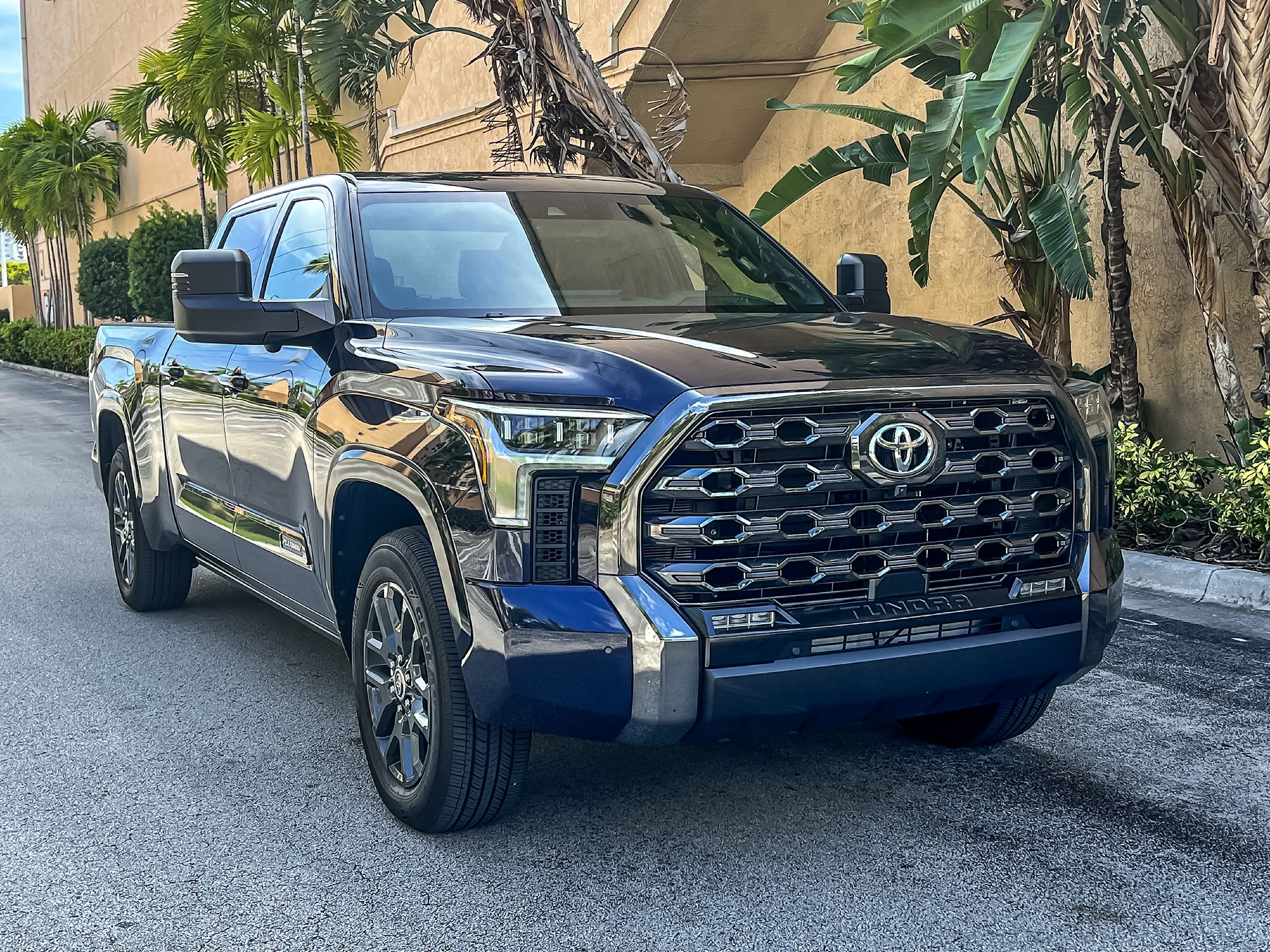
Toyota didn't rush the all-new Tundra truck for 2022. The previous generation ran for 14 years and will likely still be serving people in another 14. Designed, engineered, and assembled in the US, the new Tundra rides on a new platform with two powertrain options - a 3.5-liter twin-turbo V6 or a more powerful, hybrid version of the same. As a sign of the times, the V6-based hybrid system replaces the old Tundra's trusty V8. It's an important new model for Toyota in the US as it seeks to move up from being the value alternative to Detroit's staple of trucks and become a real contender. After a week in a Limited trim model, we mulled over our time to decide what we liked and didn't like compared to the outgoing truck.
Love: The New Interior
While the new Tundra's interior isn't as luxurious as something from RAM, it's a big step up from the previous generation. The seats are big and comfortable, and the double cab has a ton of legroom for passengers in the back. A lot of thought has gone into the interior of how people use their trucks. Storage space is plentiful; the 14-inch touchscreen takes up a large chunk of the dashboard, making navigation super-easy to view. The controls underneath are laid out practically, almost like piano keys, and look good, as well as being easy to hit in gloves. The climate control system is refreshing in its set-it and forget-it nature.
Mostly, the interior looks more upscale than before, but some cheap-looking plastics are particularly noticeable on the door panels. We will gladly take that given the marked improvement, or rather complete lack of, road noise in the new model.
Hate: The Lack Of V8 Noise
We know the world is moving forward, but it's hard not to miss the Tundra's burbling V8 sound. It's just an aesthetic, though, as the new powertrains are not lacking power and ability in the slightest compared to the predecessor. The hybrid version - dubbed the i-FORCE MAX - packs 437 horsepower with 583 lb-ft of torque, and the twin-turbo V6 has sonorous qualities with a wide open throttle. The previous V8 made 381 horsepower and 401 lb-ft of torque, which is quite a bit down on the new twin-turbo V6's 389 horsepower and 479 lb-ft. That means you don't have to step up to the hybrid to get more power than before.
Love: The Drive
While the feel of the pavement through the suspension isn't a night and day difference, the new Tundra is nicer to drive than the old one. The ten-speed transmission is smooth and uses the torque coming on tap early in the rev range. The drop in cabin noise is significant enough to bring up twice, as is just the general ambiance in the cabin. The steering is also more precise, although it's not as sharp as some Detroit-based rivals. The brakes are a reasonable step up with plenty of stopping power and a linear feel underfoot. The Lexus-derived V6 is as silky-smooth as it should be, and has a lot to do with how pleasant to drive the new Tundra is.
Love: All The Safety Features As Standard
As a result of Toyota's dedication to safety with the latest iteration of the Tundra, the Insurance Institute for Highway Safety (IIHS) bestowed it with the much coveted Top Safety Pick+ award, making the Tundra the safest truck in America. Don't let the upgrade in interior and ride quality fool you; the Tundra is tough. It's engineered to last over a million miles (your mileage may vary, of course), but the truck will only go that far if it gets wrecked.
Toyota's Safety Sense 2.5 suite is packed with stuff other automakers make you upgrade to with packages and includes blind-spot monitoring as standard - something we want to be standard on all vehicles as soon as possible. The safety suite also includes, but isn't limited to, a pre-collision system with pedestrian detection, full-speed range dynamic radar cruise control, lane departure alert with steering assist, lane tracing assist, automatic high beams, and road sign assist.
Hate: The Grille
While the styling on the previous Tundra wasn't by any means terrible, it was a little basic. The new styling is more sophisticated, and we're all for that. However, and your opinion may vary considerably, we're not a fan of the all-encompassing front grille. We get it, and airflow is everything to a truck designed to tow heavy loads, but it doesn't have to be the entire front end to the point it looks like it's pushing the headlights onto the fenders. We can't help but think some poor designer worked into the night for weeks to come up with small, elegant-yet-chiseled units, only to find a manager declaring, "The grille isn't big enough. Push it all the way out to the headlights. Design school be damned!"
Love And Hate: Fuel Economy
Part of the reason we were excited about the idea of a hybrid Tundra was fuel economy, and it's something truck drivers desperately need right now. Toyota wrote the book on hybrid power when it developed the Prius, and to this day, it makes the best passenger-vehicle hybrids in terms of fuel economy. The new Tundra's fuel economy is substantially better than the V8 model's (15 mpg combined in 2WD form), but it's not the best in class. The standard V6 engine nets an EPA estimated 18/24/20 mpg city/highway/combined, while the hybrid take gets 20/24/22 mpg. The Ford F-150 PowerBoost hybrid gets 26 and 28 mpg, respectively.
From what we can tell, the major difference between drivetrains is that the Toyota uses a nickel-metal hydride pack while the Ford uses a lithium-ion unit of roughly the same size. Lithium-ion battery packs are known to have a better energy-to-weight ratio. Still, there's a kicker: Nickel-metal hydride batteries are known to be better at withstanding harsher weather conditions, whether freezing northerly winters or blazing-hot desert summers. Toyota has been phasing out nickel-metal hydride batteries, but there's a reason they still use the older tech for the all-wheel-drive Prius and the new Tundra.

